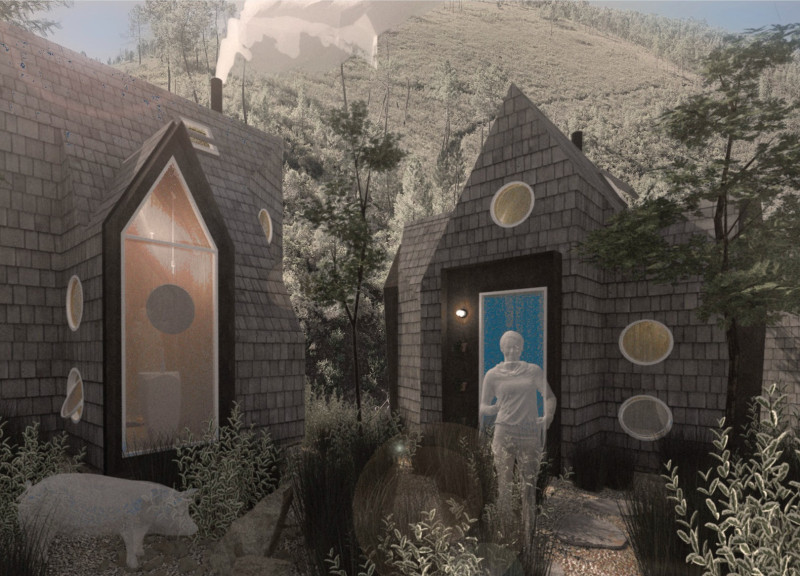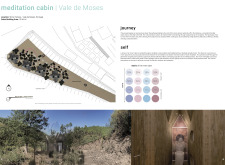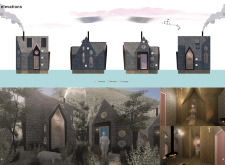5 key facts about this project
The design of the cabin emphasizes the journey of the user, starting from the pathway that leads to the entrance. The approach is carefully designed to evoke a sense of anticipation, encouraging users to leave their external worries behind. Inside, the layout features distinct zones tailored for meditation, promoting mindfulness and solitude. The overall aesthetic employs a minimal color palette, fostering an atmosphere that aligns with the cabin’s intended purpose.
Unique Design Approaches and Materiality
One of the defining characteristics of this project is its innovative use of materials. The cabin is constructed primarily from cross-laminated timber, ensuring structural integrity while emphasizing sustainability. The use of wood shingles on the roof complements the rustic atmosphere while allowing for effective thermal performance. Natural stone has been incorporated at the base of the structure, adding both thermal mass and durability. Additionally, tinted films on the windows provide privacy while modulating light, contributing to the serene ambiance of the interior.
Architectural elements such as triangular forms and rounded openings create dynamic visual compositions throughout the cabin, enhancing the spatial experience. The asymmetry in the roofline not only adds an aesthetic dimension but also enhances natural light penetration, vital for a space dedicated to mindfulness. Passive cooling and heating strategies further highlight the project’s ecological principles, promoting energy efficiency and comfort.
Functional Zones and Layout
Inside the cabin, strategic zoning ensures multi-functionality without compromising the essence of the space. The design includes areas for individual reflection, meditation, and relaxation. The spatial configuration encourages movement through the cabin, with each area providing unique visual and experiential qualities. This layout effectively facilitates a transition from external interactions to an inward focus, embodying the central theme of the project.
The technical integration of sustainable fixtures, including LED lighting and smart water technologies, underscores a commitment to environmental responsibility. These elements are seamlessly woven into the design to ensure user convenience without detracting from the overall aesthetic or function.
For those interested in a more in-depth understanding of the meditation cabin, further exploration of the architectural plans, sections, designs, and ideas will provide valuable insights into this thoughtful and well-executed project. The presentation encapsulates the careful consideration given to both form and function, contributing to a well-rounded architectural narrative.


























